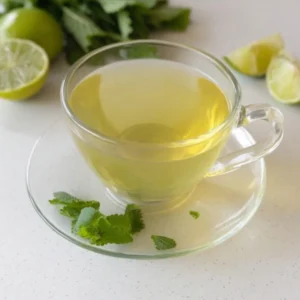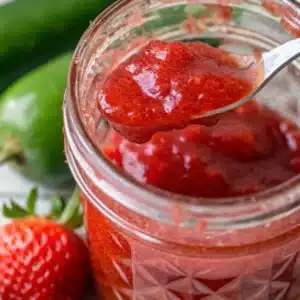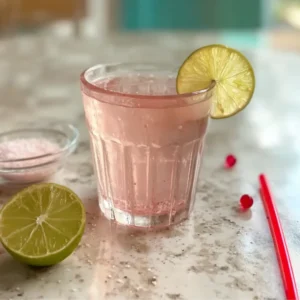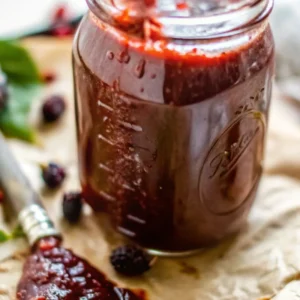
Himalayan Pink Salt for Asthma: Can It Really Help You Breathe Better?
Himalayan pink salt for asthma is gaining attention as a natural aid in managing respiratory symptoms. For individuals tired of constant inhalers and synthetic medications, the idea of using a simple mineral to soothe wheezing and tight chest muscles sounds almost too good to be true. But in recent years, natural health enthusiasts and even some respiratory therapists have begun to look more closely at the benefits of salt therapy—particularly with Himalayan pink salt.
With its rich mineral composition and time-tested healing reputation, Himalayan pink salt has found its way into inhalers, lamps, and even salt caves—all touted as holistic tools to improve breathing. But how real are these claims? Can something as basic as salt really support your lungs?
As asthma cases rise across the U.S., many are turning to alternative solutions like Himalayan pink salt for asthma relief. Traditional treatment options—such as corticosteroids and rescue inhalers—are vital, but they often come with side effects or diminishing returns for chronic sufferers. Salt therapy, or halotherapy, is being embraced as a complementary method to open airways, reduce inflammation, and naturally purify the lungs.
The demand for Himalayan pink salt for asthma isn’t just a trend—it’s rooted in centuries of wellness practices. From Eastern medicine to modern spa therapies, this mineral-rich salt has been used to treat skin, gut, and lung health. Today, you’ll find salt-based remedies in wellness stores, pharmacies, and even clinical trials focused on respiratory care.
Looking for inspiration? Try this clever pink salt trick for weight loss that’s making waves for its dual benefits in breathing and metabolism.
Table of Contents
Understanding Asthma and Natural Remedies
Overview of Asthma and Its Triggers
Himalayan pink salt for asthma has become a widely discussed natural remedy, especially among those looking for alternatives to conventional treatments. But before diving into how this pink mineral might help, it’s important to understand what asthma actually is. Asthma is a chronic lung condition that causes the airways to swell, narrow, and fill with mucus, making it hard to breathe. Symptoms often include coughing, wheezing, chest tightness, and shortness of breath.
These flare-ups are usually triggered by allergens like pollen or dust, exposure to smoke, intense exercise, or even cold air. For millions of people in the United States, asthma can limit daily activities, interrupt sleep, and cause frequent doctor visits.
Although traditional treatments such as inhalers and steroids are effective, they don’t always provide lasting relief. That’s where Himalayan pink salt for asthma steps into the conversation—as a natural, complementary approach for better breathing.
Why People Seek Alternative Treatments Like Himalayan Salt
More people are turning toward natural remedies, not because they want to abandon modern medicine, but because they’re seeking gentler ways to support their lungs. Over time, repeated use of asthma medications can lead to side effects like sore throats, jitteriness, or dependence. That’s why many are exploring Himalayan pink salt for asthma as a supportive therapy that may help cleanse the respiratory system.
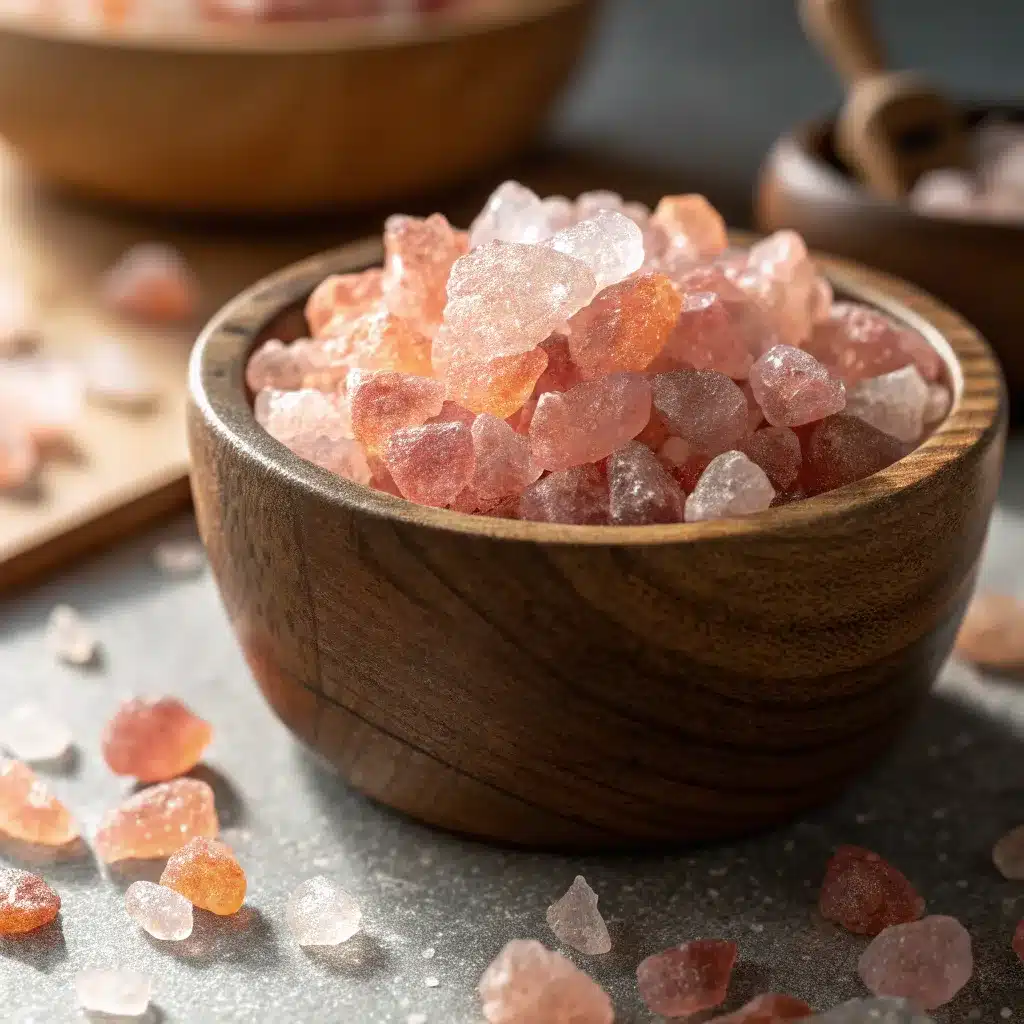
Himalayan salt, packed with over 80 minerals, is believed to carry anti-inflammatory and antibacterial properties. When inhaled through a salt pipe or used in halotherapy, it may help reduce mucus buildup, relax airways, and make breathing smoother. It’s not meant to replace prescribed treatments, but rather enhance lung function and offer additional comfort.
Beyond the physical effects, this salt-based method is often described as calming and therapeutic—something many asthma sufferers crave. Even just a few minutes with a Himalayan salt inhaler can provide a sense of clarity and control, especially during periods of stress or allergy flare-ups.
Himalayan pink salt for asthma is also appealing because it’s natural, non-invasive, and easy to use at home. There’s no harsh chemical or complicated routine—just mindful breathing through mineral-rich air.
Check out related natural remedies like pink Himalayan salt for migraines, which has shown similar soothing effects for headache and sinus sufferers.
Introduction to Himalayan Pink Salt
How Himalayan Salt Is Formed
Himalayan pink salt for asthma isn’t just a wellness trend—it’s a remedy rooted in deep geological history. This salt is mined from ancient sea beds located in the foothills of the Himalayan mountains, where it’s been preserved for over 250 million years. Thanks to its untouched purity and rich mineral content, many believe this natural salt offers powerful healing properties, especially for people struggling with respiratory conditions like asthma.
Unlike heavily processed table salt, Himalayan pink salt for asthma stands out because it contains over 80 trace minerals, including calcium, potassium, magnesium, and iron. These minerals not only give the salt its signature rosy hue but also contribute to its reputation as a natural healer. And while it’s long been used in cooking and bath therapies, more and more people now rely on Himalayan pink salt for asthma as part of their daily lung care routine.
Mineral Composition and Health Claims
The buzz surrounding Himalayan pink salt for asthma isn’t just hype—it’s supported by both tradition and anecdotal success stories. When finely ground and inhaled through a salt pipe or diffuser, this mineral-rich salt releases microscopic particles that travel deep into the lungs. These particles are believed to reduce inflammation, clear mucus, and support smoother breathing—key benefits for asthma sufferers.
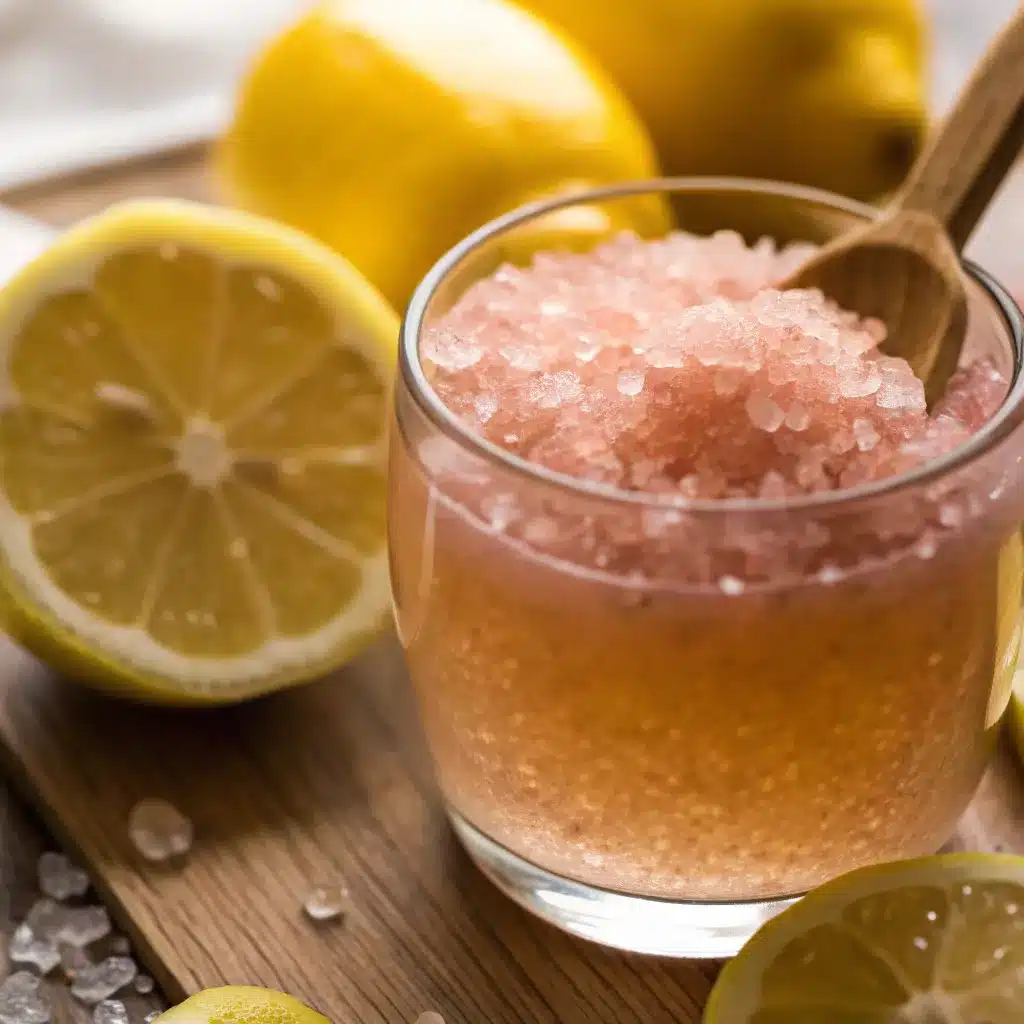
In salt therapy, or halotherapy, patients often sit in salt-infused rooms or breathe through salt inhalers. In both methods, Himalayan pink salt for asthma is the centerpiece. Its natural antibacterial and anti-inflammatory properties make it a favorite among people searching for drug-free asthma relief. Many say they feel clearer, calmer, and more open-chested after just a few days of use.
The body’s respiratory system thrives in clean, mineral-rich environments, which is why Himalayan pink salt for asthma continues to rise in popularity. It mimics the microclimate of salt caves—once used in Eastern Europe to help miners with lung conditions. Now, modern households use this same natural solution in a far more convenient way.
It’s not just about salt, though—it’s about the type of salt. Only pure, food-grade Himalayan pink salt for asthma should be used in therapeutic devices. Never substitute with processed or iodized salt, which lacks the vital minerals that give Himalayan salt its healing edge.
Those who regularly use Himalayan pink salt for asthma often report fewer flare-ups, less congestion, and better breathing during allergy season. It’s especially popular among parents looking for natural solutions for their kids’ breathing troubles. Plus, it’s easy to integrate into your daily routine—just a few slow inhalations from a salt pipe each morning and night can make a noticeable difference.
Beyond its respiratory perks, this pink salt is known to reduce stress, regulate mood, and improve sleep quality—benefits that can indirectly support asthma health by lowering stress-induced symptoms.
If you’re interested in multi-benefit approaches, check out how pink salt supports electrolyte levels—especially useful for those managing both hydration and lung health at once.
Whether you’re using a ceramic salt inhaler, a salt diffuser, or even experimenting with a personal salt room, consistency is key. Experts recommend using Himalayan pink salt for asthma daily to get the most out of its therapeutic effects. It may not replace your prescribed medication, but it can certainly enhance your quality of life and reduce dependency on aggressive treatments over time.
There’s a reason why so many wellness practitioners and holistic doctors are recommending Himalayan pink salt for asthma. Its ability to detoxify airways, soothe irritated bronchial passages, and deliver comfort without chemicals makes it one of the most trusted natural asthma aids available today.
The bottom line? Himalayan pink salt for asthma offers a gentle yet powerful way to breathe better—naturally, affordably, and without harmful side effects. With continued use, many individuals experience a real difference in their daily lung performance and overall energy levels.
Himalayan pink salt for asthma is more than a remedy—it’s a lifestyle upgrade for people who want cleaner lungs and a clearer path to wellness.
Himalayan Pink Salt for Asthma – The Connection
Scientific Views on Salt Therapy
More than just a wellness buzzword, Himalayan pink salt for asthma has piqued the curiosity of scientists and healthcare professionals alike. While formal clinical trials are limited, there’s a growing body of observational studies and anecdotal reports supporting salt therapy as a supplemental treatment for chronic respiratory conditions.
Halotherapy—or dry salt therapy—is based on the idea that breathing in micro-sized salt particles helps reduce inflammation and clear mucus from the airways. In this process, finely ground Himalayan pink salt for asthma is dispersed into the air using salt pipes or inhalers. Once inhaled, the particles travel through the nasal passages and deep into the lungs.
Many researchers believe this salt acts as a natural antibacterial agent. It draws out moisture from the mucosal lining, thins the mucus, and makes it easier to expel. That’s particularly important for asthma sufferers, where thick mucus and airway inflammation are constant obstacles. While more clinical evidence is still needed, some early studies suggest salt therapy may help improve lung function, reduce coughing, and lower asthma-related stress.
The core idea is simple: cleaner lungs, smoother breathing. That’s why wellness centers and even pediatric clinics are now offering halotherapy rooms featuring Himalayan pink salt for asthma as a gentle complement to traditional treatments.
Real User Experiences with Asthma and Pink Salt
While the science is promising, it’s the real-life stories that make Himalayan pink salt for asthma truly compelling. Thousands of asthma sufferers have turned to pink salt after years of relying solely on medications, and many report noticeable improvements in both breathing and quality of life.
Take Jenna, a 32-year-old mom from Arizona. After experiencing nightly asthma attacks triggered by dry desert air, she began using a ceramic inhaler filled with Himalayan pink salt for asthma twice a day. Within weeks, she noticed fewer flare-ups and no longer needed her rescue inhaler as often.
Or consider Marcus, a teenager in Texas with exercise-induced asthma. His parents incorporated salt therapy into his daily routine, and today he plays basketball without constant wheezing. They describe Himalayan pink salt for asthma as “a game changer.”
These aren’t isolated cases. In online communities and wellness forums, similar testimonials are shared by users who swear by pink salt’s ability to open airways, ease congestion, and reduce dependency on synthetic medications. And while results vary from person to person, one thing is consistent: people love how simple and non-invasive it is.
Discover more personal wins with pink salt in our article on the pink salt trick for weight loss—where many users noticed crossover benefits like improved breathing and circulation.
Even people with mild seasonal asthma or allergies have found Himalayan pink salt for asthma to be surprisingly effective. Whether used through a handheld inhaler, a wall-mounted salt lamp, or full salt therapy sessions, the experience often brings a feeling of instant calm and breathability.
For asthma sufferers constantly on alert for the next episode, that kind of daily relief can feel revolutionary.
How Himalayan Salt Inhalers Work for Asthma
Mechanism of Action and Health Benefits
Understanding how Himalayan pink salt for asthma works begins with the simple mechanics of a salt inhaler. These ceramic or plastic devices are designed to hold natural Himalayan salt crystals in a chamber, allowing users to draw in dry, mineral-rich air through their mouth and exhale through their nose. This process, repeated regularly, is believed to deliver fine salt particles deep into the respiratory tract.
Once inhaled, the microscopic salt particles are thought to perform several therapeutic actions. First, they may act as natural anti-inflammatories, helping to soothe swollen airways—a major concern for anyone with asthma. Secondly, these particles can absorb excess moisture from mucus, thinning it and making it easier to expel. As a result, users of Himalayan pink salt for asthma often report less chest tightness, fewer spasms, and reduced wheezing.
Unlike steam therapy or nebulizers, salt inhalers don’t rely on moisture or medicine. They work dry, making them more convenient for travel and easier to use at any time of day. That’s part of the appeal—using Himalayan pink salt for asthma doesn’t require a prescription, and it fits easily into a busy lifestyle.
Beyond direct respiratory relief, some users say the process promotes overall relaxation. The act of slow, deep breathing—combined with the salt’s trace minerals—may help regulate stress levels, another key asthma trigger. So, while it’s not a miracle cure, this tool offers a low-risk, high-comfort way to support your lungs.
Looking for inspiration? Try this companion remedy for pink salt and Mounjaro that blends breathing and metabolic health.
Common Misconceptions and Clinical Evidence
Despite growing popularity, Himalayan pink salt for asthma still comes with a fair share of myths and misunderstandings. One major misconception is that it can replace traditional medications. This is not true. While salt inhalers can be incredibly supportive, they should be used alongside—not instead of—your prescribed asthma treatments.
Another common myth is that all salt is the same. That’s far from the case. Only pure, food-grade Himalayan pink salt should be used in inhalers. Table salt or chemically treated varieties lack the mineral diversity and purity that make Himalayan pink salt for asthma effective.
On the science side, while more research is needed, existing studies on halotherapy offer encouraging signs. Some small trials and observational research indicate improvements in mucus clearance and reductions in airway inflammation. Clinical results aren’t yet conclusive, but the volume of anecdotal success stories continues to grow.
It’s important to remember that asthma varies from person to person. For some, Himalayan pink salt for asthma might bring dramatic relief. For others, it may simply offer a mild breathing aid and calming effect. Either way, it’s a natural tool worth exploring—especially when used responsibly and consistently.
If you’re curious about other therapeutic applications, don’t miss our article on pink Himalayan salt for migraines, where users have also reported better airflow and reduced tension.
How to Use a Himalayan Salt Inhaler Safely
Step-by-Step Guide for Beginners
Using Himalayan pink salt for asthma through an inhaler is incredibly simple—and that’s part of why it’s gaining popularity. All you need is a dry ceramic or BPA-free plastic inhaler and pure, food-grade Himalayan pink salt.
To get started:
- Add 1 to 2 tablespoons of Himalayan pink salt to the inhaler chamber.
- Place the mouthpiece between your lips.
- Inhale slowly through the mouth, then exhale through the nose.
- Repeat for 10–15 minutes daily, preferably in the morning and evening.
There’s no steam, no power, and no mess. Just dry salt air.
How Much Salt Should You Add to an Inhaler?
A common question is how much salt to use. For best results with Himalayan pink salt for asthma, keep 1–2 tablespoons of salt inside the device at all times. You don’t need to refill it after each session—the salt remains effective for up to 90 days with daily use. Replace it every 3 months for maximum benefit.
If you’re new to this therapy, start slow. Even five minutes per day can help your body adjust. Always monitor your breathing and consult your doctor if symptoms worsen.
Looking for more natural breathing tips? Discover our guide to electrolyte support with pink salt, another simple way to care for your body.
Who Should Avoid Himalayan Salt for Asthma
Health Conditions That Require Caution
While Himalayan pink salt for asthma is often promoted as a natural and gentle solution, it’s not suitable for everyone. Like any alternative therapy, salt inhalation should be used with caution—especially for individuals with specific health conditions or sensitivities.
People with severe asthma, chronic obstructive pulmonary disease (COPD), or advanced respiratory disorders should consult a healthcare provider before starting salt therapy. Inhaling salt particles can sometimes trigger airway irritation or dryness, particularly if the lungs are already inflamed or overly sensitive.

Additionally, anyone with sodium-sensitive health conditions, such as high blood pressure, kidney disease, or salt-sensitive migraines, should avoid unnecessary exposure to salt therapy unless medically cleared. Even though Himalayan pink salt for asthma is not ingested during inhalation, trace amounts can still impact sensitive systems over time.
When to Consult a Doctor
Before incorporating Himalayan pink salt for asthma into your daily routine, especially via inhalers or salt rooms, it’s wise to speak with a licensed medical professional. This is especially important for:
- Children under 5
- Seniors with compromised lung function
- Pregnant women
- Individuals already using steroid inhalers or nebulizers
While many users find salt therapy helpful, it should never replace prescription medication or emergency inhalers. Always treat it as a complementary method, not a standalone cure.
If you experience any side effects such as throat dryness, increased coughing, or wheezing after using a salt inhaler, stop immediately and seek medical advice.
For more holistic options that safely complement your care, explore natural remedies like pink Himalayan salt for migraines, which may support circulation and relaxation without respiratory impact.
FAQ: Himalayan Pink Salt for Asthma
Do Himalayan salt inhalers really work?
Himalayan salt inhalers are not a cure for asthma, but many users report relief from mild symptoms like chest tightness and mucus buildup. The salt particles may help clear airways and reduce inflammation, supporting better breathing. For people using Himalayan pink salt for asthma, it’s often a helpful complementary tool, especially when used alongside prescribed treatments.
What does Himalayan salt do for your lungs?
When inhaled, fine particles of Himalayan pink salt may help reduce airway inflammation, thin mucus, and ease breathing. For asthma sufferers, this natural therapy—known as halotherapy—can promote cleaner, more efficient lung function. Though results vary, many find it calming and effective for daily symptom management.
Who should not use Himalayan pink salt?
People with severe asthma, chronic obstructive pulmonary disease (COPD), or salt sensitivity should consult a doctor before trying Himalayan pink salt for asthma. While it’s safe for most, some individuals may experience irritation or dryness if used excessively. Always seek medical advice before beginning any new therapy.
How much salt do you put in a Himalayan salt inhaler?
Typically, you should add 1 to 2 tablespoons of Himalayan pink salt to the inhaler. The salt doesn’t need to be replaced daily—in fact, it can last up to 90 days with regular use. For optimal results with Himalayan pink salt for asthma, consistency is key. Just 10–15 minutes of daily use can make a noticeable difference.
Want daily wellness inspiration and pink salt tips?
👉 Follow us on Facebook for natural health content
Looking for creative ways to use pink salt in your wellness routine?
👉 Explore our Pinterest boards for holistic health ideas


